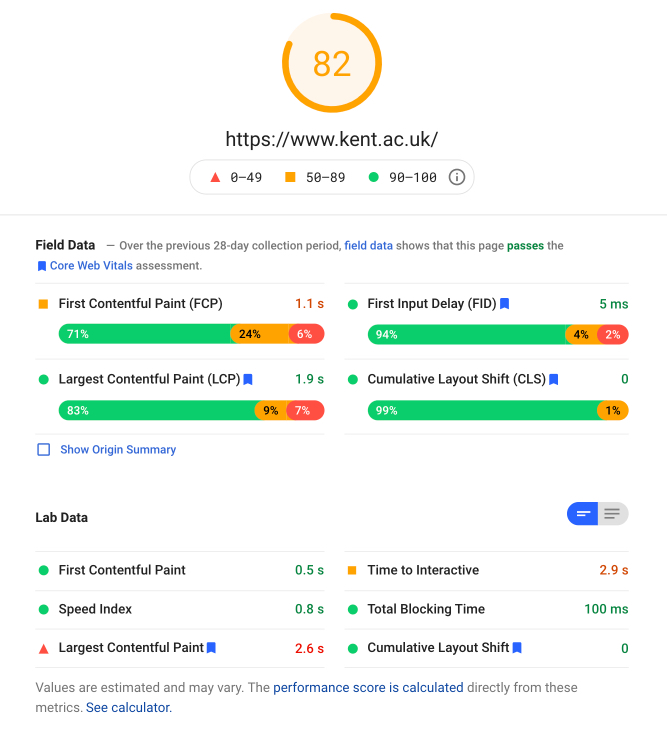Google is going to change their ranking algorithm based on the quality of a web page’s experience. We’ve been looking at our our site performance and what we can do to improve it.
Fast sites save time and make users happy. Nothing new, but Google is about to make it a lot more important.
In June, Google is planning to change their ranking algorithm based on the quality of a web page’s experience. It’s not only about relevance and SEO anymore.
Core Web Vitals
Google will be using a selection of user-centric metrics, Core Web Vitals, to measure the quality of the user experience. These include the speed, responsiveness, and visual stability of a page. The metrics are:
- Largest Contentful Paint – how quickly does the first above-the-fold content appear in the browser viewport? This is the perceived load speed (Largest Contentful Paint)?
- First Input Delay – how quickly does the site take to become interactive?
- Cumulative Layout Shift – how stable are the visual elements or do they shift around when interacting or loading potentially causing you to click the wrong thing?
How we’re doing at the moment
These are our performance results using Google PageSpeed.
Its data set is based on a combination of field data (data they’ve already collected over the past 28-days) and ‘lab data’ (data that they’re testing at that moment).
I’ve used the homepage as it represents an example of a regular showcase page, but a sample of different pages need to be tested.
Some of the performance issues on the homepage are likely to be global elements that may affect all pages.
For the homepage, desktop and mobile pass the Core Web Vitals test.
Desktop
We perform quite well on desktop.
- Largest Contentful Paint – 1.9 seconds is a ‘good’ rating.
- First Input Delay – 5 milliseconds is a ‘good’ rating.
- Cumulative Layout Shift – 0 is a ‘good’ rating.
Mobile
We pass the Core Web Vitals with a ‘good’ rating, but there are performance improvements to consider.
- Largest Contentful Paint – 1.9 seconds is a ‘good’ rating.
- First Input Delay – 29 milliseconds is a ‘good’ rating.
- Cumulative Layout Shift – 0 is a ‘good’ rating.
Third-party code is one area that we’re penalised on. This is often used for things like our our chat, youtube, social media and analytics.
What we’ve been doing to improve
We’ve been doing various bits over time to improve performance.
Smaller images are now served up on different breakpoints and we’re going to be loading critical css inline.
We’re about to start using webpack. This tool can help you use fewer files to run your web applications (module bundler) making for a more efficient page which should help performance.
We’ll also be investigating other ways to load css so that we can try get the above-the-fold content prioritised. This should improve the time it takes for the site to be perceived as interactive, which will improve our rating.
As for heavy third-party javascript, we’ll be evaluating how it’s used and decide if we can remove some of it or deal with serving it in a different way.
Our homepage should be okay for Google’s new ranking algorithm. We’ll be testing a broader sample of pages.
There are many other aspects to performance, it is an ongoing part of our development. We’ll be continually evaluating and improving it.


